THE ASCO POST remembers the following members of the oncology community who passed away in 2017–2018. Please write to editor@ASCOPost.com to recognize others and pay tribute in a future issue.
Angela Hartley Brodie, PhD
Angela Hartley Brodie, PhD, Professor Emeritus in the Department of Pharmacology at the University of Maryland School of Medicine, and an internationally recognized scientist whose groundbreaking cancer research is considered among the greatest advances in treating breast cancer, passed away on June 7, 2017. She was 82.
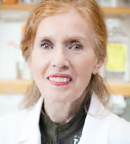
Angela Hartley Brodie, PhD
Dr. Brodie’s research revolutionized the treatment of hormone-dependent breast cancer worldwide. She pioneered the development of aromatase inhibitors, now considered among the most important contributions toward treating estrogen-driven breast cancer. Her work developing aromatase inhibitors was a paradigm-shifting effort that began in the 1970s and was designed to reduce the level of estrogen in the body, thereby blocking the growth of cancer cells.
“Dr. Angela Brodie’s impact on the treatment of breast cancer has been unparalleled. It is because of her work that a disease that was once almost a certain death sentence, can now, for many, be successfully treated and managed,” said E. Albert Reece, MD, PhD, MBA, Vice President for Medical Affairs at the University of Maryland and the John Z. and Akiko K. Bowers Distinguished Professor and Dean of the University of Maryland School of Medicine. “She never gave up on her vision of finding a new treatment with fewer side effects, and many women around the world have benefited from her perseverance.”
Dr. Brodie’s research spanned decades and built upon her initial discoveries to create more powerful and specific aromatase inhibitors. “Dr. Brodie’s pioneering research is equal to the greatest advances in treating breast cancer in the last 150 years,” said Kevin J. Cullen, MD, the Marlene and Stewart Greenebaum Distinguished Professor of Oncology at the University of Maryland School of Medicine and Director of the University of Maryland Marlene and Stewart Greenebaum Comprehensive Cancer Center. “Her work with aromatase inhibitors has saved the lives of thousands of women worldwide.”
“...because of [Dr. Brodie’s] work a disease that was once almost a certain death sentence can now, for many, be successfully treated.”— E. Albert Reece, MD, PhD, MBA
Tweet this quote
“Despite the incredible impact of her science, Angela was perhaps the most generous and unassuming scientist I have ever known. She was extraordinarily humble about her achievements and never sought attention for what she accomplished. She mentored dozens of students and junior faculty over the years, and so the impact of her work will live on for years to come,” Dr. Cullen said.
Dr. Brodie began investigating compounds to inhibit aromatase while at the Worcester Foundation for Experimental Biology in Shrewsbury, Massachusetts, initially working in a laboratory with her husband, Harry Brodie, PhD, a chemist who synthesized the first selective inhibitors in the early 1970s, including a potent compound called 4-hydroxyandrostenedione (4-OHA). She continued her research with 4-OHA after coming to the University of Maryland School of Medicine in 1979, spearheading its development through clinical trials into a treatment for breast cancer. Released as formestane for worldwide use in 1994, it was the first new agent in a decade specifically designed to treat breast cancer.
Dr. Brodie’s first paper reporting the laboratory success of aromatase inhibitors at reducing estrogen levels was rejected because “they thought the finding was too obvious,” Dr. Brodie recalled. She tried to interest pharmaceutical companies, but many thought her work was unnecessary and that chemotherapy was the answer. It was only through her persistence that her experimental compound ever made it to clinical trial. She ended up making small batches of the aromatase inhibitor in her laboratory at the University of Maryland School of Medicine and shipping it to the Royal Marsden Hospital in London, where it was given to 11 women with advanced breast cancer as part of a clinical trial.
In 2013, she was selected by the AACR as a fellow of the newly created AACR Academy. AACR created the academy “to recognize and honor distinguished scientists whose major scientific contributions have propelled significant innovation and progress against cancer.” She also received the Pharmacia Award of the American Society for Experimental Therapeutics in 2012.
Dr. Brodie’s distinguished career at the University of Maryland School of Medicine spanned 37 years until she retired in 2016. She was Professor of Pharmacology at the School of Medicine and a researcher in the Hormone-Responsive Cancers Program at the University of Maryland Marlene and Stewart Greenebaum Comprehensive Cancer Center.
The School of Medicine is establishing an endowed professorship in honor of Dr. Brodie’s scientific achievements: The Drs. Angela and Harry Brodie Distinguished Professorship in Translational Cancer Research.
Donald Coffey, PhD
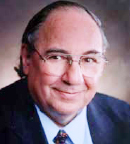
Donald Coffey, PhD
Donald Coffey, PhD, a distinguished Johns Hopkins Professor and prostate cancer expert, who was the former Director of the Brady Urological Research Laboratory and Deputy Director of the Johns Hopkins Kimmel Cancer Center, died on November 9, 2017, at the age of 85.
In his more than 50 years at Johns Hopkins, Dr. Coffey amassed a long list of accomplishments. Many of the accolades are as unconventional as the man. He chaired the Department of Pharmacology without ever taking a course in pharmacology. With no medical degree, he helped found the Cancer Center in 1973 with its first Director, Albert Owens, and then he ran it briefly in 1987.
Dr. Coffey, who became one of Johns Hopkins’ first triple professors, began his career washing glassware for graduate students. He worked at Westinghouse designing radar antennas during the day, and in the evening, he took classes and worked in the urology laboratory. In 1959, he was named the Director of the Brady Urological Research Laboratory. After a year of running the lab, he was accepted into the Johns Hopkins University School of Medicine’s graduate program in biochemistry.
“Don touched so many of us in such profound ways that it is hard to imagine life without him. We know how fortunate we have been to know him and experience his special and wonderful uniqueness. So, we are only really without him in body, but not in soul,” says Kenneth Pienta, MD, Director of Research for the Brady Urological Institute at Johns Hopkins and the Donald S. Coffey Professor of Urology.
In 1964, Dr. Coffey earned his PhD at 33 years of age, and by then, he had already been a chemist, an engineer, a laboratory director, and prostate cancer researcher. He became the Catherine Iola and J. Smith Michael Distinguished Professor of Urology— as well as Professor of Oncology, Pharmacology and Molecular Sciences, and Pathology—and a member of the professional staff of the Applied Physics Laboratory. He is also a former President of the American Association for Cancer Research (AACR). His many awards include the Fuller Award and Lifetime Achievement Award from the American Urological Association, an American Cancer Society Distinguished Service Award, and the AACR Margaret Foti Award for Leadership and Extraordinary Achievements in Cancer Research.
“The American Association for Cancer Research is deeply saddened by the loss of Dr. Donald Coffey, a Past President of the AACR and Fellow of the AACR Academy,” said Margaret Foti, PhD, MD (hc), Chief Executive Officer of the AACR. “His outstanding leadership skills, dedication to mentoring young investigators, passionate advocacy for sustained in creases in funding for cancer research, and remarkable ability to translate complex scientific concepts into lay language made him an icon in the field and a true champion of cancer research.”
“...Don’s outstanding leadership skills, dedication to mentoring young investigators,...and remarkable ability to translate complex scientific concepts into lay language made him an icon in the field and a true champion of cancer research.— Margaret Foti, PhD, MD (hc)
Tweet this quote
Dr. Coffey’s early research was in many ways the bedrock on which modern genetic and epigenetic discoveries at Johns Hopkins were built. In 1974, he challenged the popular thought on how DNA was copied, looking instead to the core of the nucleus. At the time, it was a revolutionary idea. Most scientists believed there was nothing inside the core. Dr. Coffey brought together two young scientists who were new to the field of cancer research and are now leaders in cancer immunology and cancer genetics: Drew Pardoll, MD, PhD, and Bert Vogelstein, MD.
Dr. Coffey revealed that the nucleus has a skeleton, which he dubbed the nuclear matrix.
He described cancer as the body’s genetic tape playing the wrong song at the wrong time and set out to discover what decides which tape is played and when, and how that contributes to the uncontrolled cell growth that is the hallmark of cancer.
Robert W. Day, MD
Robert W. Day, MD, the longest-serving President and Director of Fred Hutchinson Cancer Research Center and the leader who brought into being its campus overlooking Seattle’s South Lake Union, died in his home on January 6, 2018 of lung cancer. He was 87.
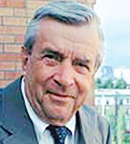
Robert W. Day, MD. Fred Hutch file photo.
“It is a tragic loss for all of us,” said Fred Hutch President and Director Gary Gilliland, MD. “He was a wonderful friend and mentor—I will be forever grateful to Bob for taking me under his wing when I started here 3 years ago.
A well-read man who exuded charm and wit, Dr. Day was also a competitive and uncompromising advocate, determined to fulfill his vision of the Hutch—that of a growing, thriving center of excellence for basic science, clinical trials, and public health and prevention research.
From 1981 until 1997, Dr. Day presided over the Hutch during a period when Dr. E. Donnall Thomas’ pioneering bone marrow transplant research drew increasing international attention and earned Dr. Thomas the 1990 Nobel Prize in physiology or medicine. Under Dr. Day’s leadership, Fred Hutch established its long-standing position as the top recipient of research grant dollars from the National Cancer Institute.
But Dr. Day’s signature achievement was acquisition of the 15-acre site in South Lake Union in a series of transactions from 1988 through 1991 and the subsequent move from the Hutch’s original headquarters on First Hill in Seattle to a 13-building complex now known as the Robert W. Day Campus. A bronze bust of Dr. Day gazes across a brick plaza at the center of that campus.
With most of the key properties lined up, the Hutch board of trustees approved the plan in October 1989. That move, controversial both within and without the confines of Fred Hutch in the 1990s, is now widely regarded as a masterstroke. Dr. Gilliland called it “one of the most important and momentous decisions in the history of the Hutch.”
Dr. Day left Harvard early, transferring directly to the University of Chicago Medical School, attracted in part to the educational philosophy of the university’s president, Robert Maynard Hutchins, who was a proponent of teaching the Great Books of the Western World as a core of a liberal arts curriculum. As a student, Dr. Day attended small, informal dinners at the university with the likes of physicist Enrico Fermi and economist Milton Friedman. He graduated in 1956 with an MD degree and an intense interest in public health.
His academic training and early career in public health forged a commitment that would later shape the Hutch as a leader in the field. Before coming to Seattle in 1969, he was already a rising young star, serving as Chief Deputy Director of the California Department of Public Health under the administration of then Governor Ronald Reagan. There he drafted the first regulations for MediCal, the state’s health care system for the poor under the federal Medicaid program.
Dr. Day then spent nearly a decade as Dean and Professor at the University of Washington (UW) School of Public Health. He was serving as a UW representative on the board of Fred Hutchinson Cancer Research Center when founder Dr. William Hutchinson reached out in 1981 and asked him to run the center.
Dr. Day was the first to succeed the iconic Hutchinson as President and Director. As Fred Hutch’s president, Dr. Day quickly set about creating his own administrative infrastructure, making his mark with a disciplined hand and a strategic outlook. Facing competition for that talent from new biotechnology companies, and convinced that the Hutch had no room to grow on First Hill, Day soon began looking to consolidate all Hutch operations, which were spreading to downtown Seattle.
In the final years of his presidency, as the phased construction of the new campus was under way, Dr. Day oversaw the complex negotiations with the University of Washington and Seattle Children’s Hospital that led to the creation of Seattle Cancer Care Alliance, the clinical care partner of Fred Hutch.
By Sabin Russell, Fred Hutch News Service
Gerald E. Hanks, MD
From Wilhelm Röntgen’s groundbreaking discovery of x-rays in 1895, the history of radiotherapy has been rich with colorful paradigm-changing researchers and physicians who over the past century have transformed the field into one of the pillars of cancer treatment. One such trailblazer who pioneered the use of three-dimensional, conformal radiation therapy, which heightened treatment efficacy and lessened side effects, was Gerald E. Hanks, MD. Dr. Hanks died at his home in Tiburon, California, on December 20, 2017, at the age of 83.
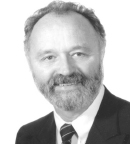
Gerald E. Hanks, MD
Dr. Hanks was born on September 21, 1934, in Ellensburg, Washington, at the time a small town of barely 4,000 people situated in the shadows of the towering Cascade Mountain Range. His father was a livestock dealer who died when Dr. Hanks was a young boy.
After completing his undergraduate studies, Dr. Hanks attended Washington University Medical School in St. Louis. After attaining his medical degree, he did an internal medicine internship at Yale School of Medicine. Following his internship, Dr. Hanks went back to the West Coast and began his residency at Stanford University School of Medicine.
At that time, the nascent field of radiation oncology was part of the radiology department, focusing mainly on diagnostics. However, in an interview with The ASCO Post, Dr. Hanks’ former mentee and colleague, Eric M. Horwitz, MD, Chair of the Department of Radiology at Fox Chase Cancer Center, explained that the National Cancer Institute had decided it was time to promote radiation oncology as a subspecialty and Dr. Hanks was Stanford’s first resident in radiation oncology in a trainee program headed by Dr. Henry Kaplan and sponsored by the National Cancer Institute. In fact, at the time, he was one of only three original radiation oncology residents in the entire country.
In 1968, Dr. Hanks became Director of an innovative division at the University of North Carolina; his work shed new light on the radiologic management of lymphomas, prostate cancer, and gynecologic cancer, helping to initiate the Gynecologic Oncology Group.
Beginning in 1971, Dr. Hanks worked in private practice in Sacramento, California, where he remained for the next 14 years and became very involved in clinical research with the Radiation Therapy Oncology Group and the Patterns of Care Studies. Dr. Hanks was active and influential in the development of ASTRO and served as the Association’s President from 1983 to 1984. In addition to pioneering new therapeutic techniques, Dr. Hanks was instrumental in establishing guidelines and new standards for quality of care.
In 1985, he joined the faculty at the University of Pennsylvania. By then, he was a leading authority on quality assurance in radiation oncology and assumed the role of principal investigator for the national Patterns of Care Studies, which monitor radiation therapy nationwide. Dr. Hanks became Head of the Radiation Oncology Department at Fox Chase Cancer Center, where he remained until his retirement from active practice. For men at high risk of prostate cancer, Dr. Hanks established the Prostate Cancer Risk Assessment Program at Fox Chase in 1996. It offers not only screening but also education about how to reduce risk factors, genetic counseling, and the opportunity to take part in prevention-oriented research.
At Fox Chase, Dr. Hanks pioneered the use of three-dimensional, conformal radiation therapy (3D-CRT), and Fox Chase initiated the 3D-CRT program in 1988. First used for prostate cancer, this therapy has become routine for many cancer sites and is now used by hospitals around the world.
Like other giants in oncology research and treatment, Dr. Hanks will be remembered for his contributions to the field. There are countless patients and their families whose lives were saved and made better from the advances in radiotherapy made possible by Dr. Hanks’ visionary work. But behind the lab coat, there was also a man who personally affected patients and associates with his warmth, humor, and generosity.
Like many of Dr. Hanks’ colleagues at Fox Chase, Dr. Horwitz recalled him as a lively and engaging man. “The term ‘giant’ is overused, but Dr. Hanks was truly one of the giants of radiation oncology. Among other things, he’s the person who developed 3D-CRT and made radiation oncology an evidence-based specialty back in the 1970s. But despite all his accomplishments, he was still a super nice guy to hang around with.”
Dr. Horwitz continued: “He was renowned for his work in prostate cancer, but Dr. Hanks loved science in its entirety. Every Tuesday during the residence conference, it was a requirement for us to have read The New York Times’ science section and discuss science and medicine issues we found interesting. He just thought the more we knew about science, the better physicians we’d be. And after he retired, I inherited some of his patients, as we had similar care philosophies. It struck me that so many would ask how Dr. Hanks was doing. They were truly concerned and never really knew he was such a famous person in oncology. He was the doctor who cured them of prostate cancer.”
H. Jean Khoury, MD
Winship Cancer Institute of Emory University (Winship) is mourning the loss of an esteemed colleague: H. Jean Khoury died on Monday, May 22, after a year spent battling cancer. His many colleagues and friends remember him as an outstanding physician, researcher, and educator and a respected and beloved member of the Winship and Emory communities.
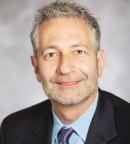
H. Jean Khoury, MD
“We are all deeply grieving the loss of this remarkable man who gave so much to Winship. His enthusiasm and love for his patients and his commitment to lessening the burden of cancer for all has been unwavering throughout his life,” said Walter J. Curran, Jr, MD, Winship’s Executive Director.
“While we all knew Jean as an outstanding clinician who was beloved by his patients, and a true innovator in treatment, what he kept more quiet was his impact on colleagues and trainees as a mentor. The list of people from all over the world who have reached out to me speaking about his role in their career development is so impressive. He was an amazing teacher and colleague, and that is what drew people to him,” said Sagar Lonial, MD, Chair of Emory’s Department of Hematology and Medical Oncology and Winship’s Chief Medical Officer.
An international leader in hematologic malignancies, particularly chronic myeloid leukemia (CML), acute leukemia, and myelodysplastic syndrome (MDS), Dr. Khoury joined Winship Cancer Institute in 2004 as Director of the Leukemia Service and Associate Professor at Emory School of Medicine. In 2009, he was promoted to Professor and Director of the Division of Hematology in the Department of Hematology and Medical Oncology, and was later named to the R. Randall Rollins Chair in Oncology.
“Jean was a transformative figure for our Hematology Division, taking the team to a new level in conducting cutting-edge research while providing compassionate patient care.”— Amelia A. Langston, MD
Tweet this quote
A native of Beirut, Lebanon, Dr. Khoury came here from Washington University in St. Louis, where he served on the faculty after completing a fellowship in hematology-oncology. He earned his medical degree from the Université Catholique de Louvain in Brussels, Belgium, and completed a residency in internal medicine at Memorial Medical Center in Savannah, Georgia.
He was recruited to Winship by Fadlo R. Khuri, MD, former Deputy Director of Winship and now President of the American University of Beirut. What he first saw in Dr. Khoury was someone who was “in the best sense, a disruptive presence.”
“What you always want in a leader is someone who’s not afraid to be wrong, to take risks. Being wrong disrupts the pattern, and Jean was very brave. He didn’t like business as usual, and that showed in the way he went about redeveloping the Hematology Division, the Leukemia Program, and his interactions with the Transplant Division, with faculty and all across Winship,” said Dr. Khuri.
The calm, quiet way in which Dr. Khoury ran Winship’s Hematology Division belied what a forceful presence he was for his colleagues and staff. Colleagues describe him as a ferocious advocate for patients and for high-quality research.
“He had amazing persistence and he was in it for the long game. If he set his mind to making something happen, it happened,” says Lonial.
“Jean was a transformative figure for our Hematology Division, taking the team to a new level in conducting cutting-edge research while providing compassionate patient care,” said Amelia A. Langston, MD, Medical Director and Section Chief of the Winship Bone Marrow and Stem Cell Transplant Program, and Executive Vice Chair of the Department of Hematology and Medical Oncology. “He led and taught by example, and we continued to learn from him even in the face of his illness. His blend of curiosity, determination, caring, and humor will leave a lasting imprint on all of us.”
Dr. Khoury’s guiding principle was how to improve his patients’ lives, whether through research discoveries or through compassionate care. Even after being diagnosed with cancer a year ago, Dr. Khoury continued to see patients and carry on his work in the clinic and in his research.
Dr. Khoury pioneered the development of personalized treatment for CML patients and better approaches to improve quality of life for survivors. His research focused on drug development in leukemia and MDS, genomic abnormalities in leukemia, development of cost-effective practice models, and outcome analysis of bone marrow transplant.
He conducted several leukemia and bone marrow transplant clinical trials, including pivotal trials that led to the approval of drugs such as imatinib (Gleevec), dasatinib (Sprycel), and nilotinib (Tasigna). Dr. Khoury received the Georgia Cancer Coalition Distinguished Cancer Scholarship, allowing establishment of the Hematological Disorders Tissue Bank at Emory, which now contains annotated germline and somatic samples from more than 800 patients with various hematologic disorders.
Dr. Khoury brought a level-headedness to all endeavors. “He was very measured in evaluating everything,” said Dr. Khuri. “The essence of a generous scientist at heart, everything was subject to the data, but human beings were always worth nurturing and encouraging.”
Paul Neiman, MD, PhD
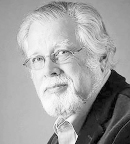
Paul Neiman, MD, PhD
Paul Neiman, MD, PhD, a founding member of Fred Hutchinson Cancer Research Center (Fred Hutch), transplant physician, and cancer biologist, died on October 11 of complications from pancreatic cancer. He was 78.
Dr. Neiman was also one of the founders and leaders of the Basic Sciences Division, one of Fred Hutch’s five scientific divisions, as well as the division that would later became the Human Biology Division. He served as Director of Basic Sciences from 1983 to 1995. He retired from Fred Hutch in 2010 but continued to work behind the scenes to secure new sources of funding for the Basic Sciences Division.
He was well known in the scientific community for his fundamental research on the interplay between viruses and cancer cells, making key discoveries about the nature of retroviruses. But at Fred Hutch, he was perhaps better known for making connections and building bridges, said many of his colleagues.
“He loved to think about connections between people and which connections will work and make things happen,” said Robert Eisenman, PhD, a molecular biologist who was one of Dr. Neiman’s first recruits to join the newly formed Fred Hutch, in an earlier interview. “If it weren’t for him, the face of the Hutch would be really different now.”
Dr. Eisenman’s colleague and former postdoctoral fellow in Dr. Neiman’s lab, Fred Hutch virologist Maxine Linial, PhD, agreed. “I think there wouldn’t be a Hutch as a first-class research institute if it wasn’t for Paul Neiman,” she said in a 2015 interview with the Fred Hutch News Service.
Dr. Neiman grew up in Seattle, as did his wife of 56 years, Carol. He went to Seattle’s Franklin High School and then to the University of Washington for both college and medical school.
Dr. Neiman caught the research bug as a medical student in the early 1960s and quickly came to see how biologic research and medicine can complement each other. That love of research led him to study leukemia at the National Cancer Institute for a few years after receiving his medical degree in 1964. He joined Dr. E. Donnall Thomas’ Seattle transplant team in 1968, when Dr. Thomas still ran a small unit in what was then Providence Hospital. Dr. Neiman also started his research laboratory to study a unique retrovirus called the Rous sarcoma virus, which causes cancer in chickens. He and his colleagues used that virus as a route to better understand the molecules that drive all tumor formation.
When Fred Hutch opened its doors in 1975, Dr. Neiman was part of the original small group of faculty and helped shape much of the cancer center’s research efforts, including directing scientific programs from 1980 to 1983.
Dr. Neiman’s own work is one of many examples of how fundamental research has led to new, unexpected understandings of human health. When he first launched his research laboratory in the early 1970s, the scientific community largely believed human cancer was caused by retroviruses, just as the sarcoma Dr. Neiman studied in chickens is triggered by the Rous virus.
Although that theory later proved false, Dr. Neiman and his colleagues’ work on Rous and similar viruses shed light on the workings of both retroviruses and oncogenes. Many scientists in the 1960s and 1970s made vital contributions to understanding these at-the-time mysterious viruses; Dr. Neiman demonstrated the presence of foreign DNA from retroviruses stitched into the genomes of infected cells, largely settling what was then a controversial issue. That finding—published in 1972, years before HIV was discovered—was a critical piece in understanding how retroviruses work.
Dr. Neiman’s work also led to further studies in his laboratory that elucidated how certain oncogenes drive cancer cells to act differently from healthy cells. He showed that programmed cell death plays a role in tumors spurred by oncogenes, and in one of his last papers, he demonstrated that the Myc oncogene causes genomic damage and instability in cancer cells.
Dr. Neiman helped further the careers of many other physicians who aspired to branch out into research. Just as he was given a chance to try his hand at the bench without the traditional scientific training of a PhD, so too he helped other medical students and residents gain research experience at the Hutch.
Dr. Neiman saw the value of conducting fundamental research in biology at Fred Hutch, where basic scientists mingled with their clinical colleagues for close collaborations that would ultimately lead to better treatments for patients with cancer. Soon after the inception of Fred Hutch, Dr. Neiman and his colleagues realized that basic biologic research needed to be expanded and formalized. In 1981, Fred Hutch formed the Basic Sciences Division.
“Paul was known for being as dedicated to his patients as he was to the fundamental research he championed,” said Fred Hutch President and Director, Gary Gilliland, MD, PhD. “He recognized that having great basic science at a cancer research center was essential to future advances for patients.”
“Treating patients was clearly of immense importance, but Paul felt basic research was an investment in the future of medicine,” Dr. Eisenman said.
By Rachel Tompa/Fred Hutch News Service
Oliver ‘Ollie’ Press, MD, PhD
In 1988, 38-year-old Rita Lawrence found herself in a desperate situation. The lymphoma she’d been battling had recurred after 2 years of remission. She’d endured multiple rounds of tough chemotherapy, but it couldn’t stave off the swiftly growing tumors. When she learned of a radioimmunotherapy trial in Seattle, she braced for the hardship of leaving her family in Illinois and flew to Seattle, becoming the fifth patient on the trial. The treatment was highly experimental, but she was confident because the doctor leading the trial, Oliver “Ollie” Press, MD, PhD, was “unlike any doctor she’d ever met.” Ms. Lawrence responded to the treatment, and her cancer went into full remission. She’s alive to this day. Dr. Press died on September 29, 2017, of complications from brain cancer. He was 65.
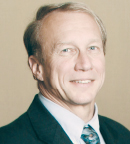
Oliver “Ollie” Press, MD, PhD
Dr. Press was born and reared in St. Louis. As a boy, he developed an early passion for zoology and spent long hours in the park near the family home looking for frogs and snakes. As an undergrad at Stanford University, Dr. Press flirted with pursuing careers in herpetology and marine biology before settling on medicine. After graduating from Stanford in 1973 with a BS in biology, Dr. Press entered the University of Washington, receiving his PhD in 1977 and his medical degree in 1979. At Stanford, Dr.
Press met his future wife, Nancy, in a study-abroad program in Germany. The couple married the day after Dr. Press’ graduation from medical school in 1979. Nancy had a career as a medical librarian, which was a natural fit with Dr. Press’ work in the laboratory. She recalled flushing marrow out of mouse bones for his PhD research project. “We were in this together,” she said during an interview, recalling how she would program computerized catalogues with the punch-card technology of the day.
Throughout the years, Ms. Press edited Dr. Press’ grant applications and also served as research administrator in his laboratory. Known for his zealous approach to research and his self-imposed grueling schedule, Dr. Press noted: “My wife deserves at least half the credit for staying with me and dealing with my fanaticism.”
Dr. Press’ reputation as a tireless researcher began building early on during medical school at the University of Washington. “Ollie had an unusually high research output on top of the position’s duties in leadership and teaching. And over the course of his career, he could invariably be spotted in his lab or office early in the mornings, at night, and on the weekends,” said his mentor at the time Paul G. Ramsey, MD, Chief Executive Officer of University of Washington Medicine and Dean of the School of Medicine.
“Ollie was a highly skilled and caring physician, an innovative and visionary cancer researcher, a talented administrator, and an exceptional mentor for so many, including me.”— Nancy Davidson, MD
Tweet this quote
Dr. Press’ groundbreaking research in radioimmunotherapy began when he was a fellow at Fred Hutchinson Cancer Research Center in 1980 and was instrumental in the therapy’s U.S. Food and Drug Administration approval in 2002. Clinical trials he led have demonstrated some of the best outcomes ever seen in certain blood cancers. However, Dr. Press expressed concern that radioimmunotherapy had relatively low use in clinical practice; to that end, he led the development of new technologies to help increase the strategy’s acceptance among clinicians. For instance, a technique he was working on was a new class of low-wavelength radioactive compounds called alpha-emitters, which would make the procedure possible in the outpatient setting. More recently, Dr. Press and mentee Brian Till, MD, developed a genetically engineered immune-cell therapy targeting CD20, which is being studied in the first-in-human trial for patients with difficult non-Hodgkin lymphomas.
Said Fred Hutch colleague David Maloney, MD: “Ollie was a pioneer in targeted therapies. He was working with antibodies back in a time when antibodies weren’t big business and with [chimeric antigen receptor] T cells when they weren’t the most promising thing.”
During his career, Dr. Press was widely recognized for his mentorship of more than 70 promising scientists and clinicians. For those efforts, he received the 2016 Mentorship Award from the University of Washington Department of Medicine. Subsequently, Fred Hutch unveiled the “Oliver ‘Ollie’ W. Press Award for Extraordinary Mentorship” to honor his contributions to cancer research. Mentee Damien Green, MD, summed up the sentiment of all those mentored by Dr. Press: “He has transformed my life.”
“The young people are the future. My day is over. To continue with success, you need young people who are bright and motivated and dedicated,” said Dr. Press at the ceremony. He will posthumously receive the American Society of Hematology Mentor Award in December 2017.
In 2015, Dr. Press was diagnosed with glioma and took a medical leave from Fred Hutch and the University of Washington to focus on his own treatment. Reflecting on his clinical situation he said, “I look at myself like I look at my patients. I think I’m very realistic about it, treating myself the same, and thinking about myself the same, and realizing I have the same limitations. It gives me a little more, I think, insight and perspective into how it really feels to have cancer.”
Dr. Press had numerous national leadership roles such as Chair of the Scientific Advisory Board for the Lymphoma Research Foundation and Co-Chair of the National Cancer Institute’s Lymphoma Steering Committee, which guides the design of national clinical trials for lymphoma, many of which were led by Dr. Press. In 2013, Dr. Press was appointed Acting Senior Vice President and Acting Director of the largest research division at Fred Hutch.
He continued to serve in that role after his cancer diagnosis until a new leader, Nancy Davidson, MD, took over on December 1, 2016. Dr. Davidson, a former ASCO President, remarked: “I had never met Ollie before I came to Seattle. From the moment I met him it was immediately apparent that Ollie was everything one could hope for: a highly skilled and caring physician, an innovative and visionary cancer researcher, a talented administrative leader, and an exceptional mentor for so many, including me as a newcomer. ■

